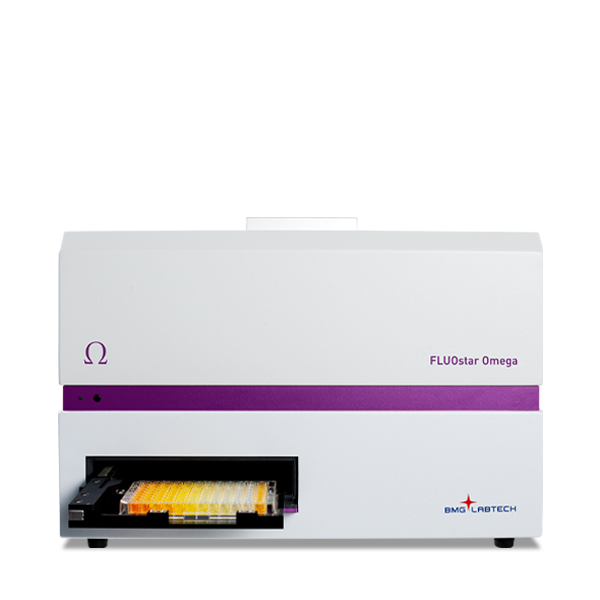What is a Multimode Microplate Reader?
A multimode microplate reader is a highly versatile laboratory instrument designed to detect biological, chemical, or physical signals from samples in microplates. It integrates multiple detection technologies—such as absorbance, fluorescence intensity, time-resolved fluorescence (TRF), and luminescence—within a single platform.
The major advantage of the multimode microplate reader is it’s flexibility: it allows researchers to run a broad range of assay types without needing multiple instruments. This capability is particularly valuable in modern healthcare and translational research, where versatility and efficiency are key.
Over the last few years, multimode readers have gained popularity by significantly improving assay precision and streamlining workflows across biochemical and cellular research.
Applications Beyond Traditional Research
In addition to biochemical and cellular studies, multimode microplate readers are also being explored in the evaluation of healthcare products such as manageable incontinence diapers. For example, they can be applied in testing absorbency materials, analyzing microbial growth inhibition, or assessing the biocompatibility of new formulations.
image source: Expert Contabil Oradea
1. High Compatibility with Automation
Modern multimode readers are optimized for use with high-density microplates and are easily integrated into automated workflows. They work seamlessly with robotic liquid handlers and plate stackers, allowing for:
- Faster sample processing
- Reduced manual handling errors
- Enhanced assay reproducibility
This is especially beneficial in pharmaceutical development and clinical trial settings, where speed and accuracy are critical. Automation compatibility also helps reduce assay turnaround time, a significant asset in high-throughput labs.
2. Versatility in Assay Types
Multimode readers combine multiple detection technologies in a single instrument, enabling researchers to perform a variety of assays, including:
- Enzyme-linked immunosorbent assays (ELISA)
- DNA/RNA quantification
- Reporter gene assays
- Cell viability and cytotoxicity studies
In the past, conducting such diverse assays would have required multiple specialized instruments. Multimode readers simplify lab operations by offering a unified platform.
3. Comprehensive Data Analysis and Software Integration
These readers are well-equipped with sophisticated software suites that facilitate various kinds of complex data analyses, such as kinetic measurements, curve fitting, spectral scanning, and various types of assay evaluation. Many platforms are compatible with laboratory information management systems (LIMS), thereby enabling data transfer and compliance with regulatory standards (e.g., 21 CFR Part 11).
In translational research, data traceability is essential for validating the results. It is also important for supporting all the regulatory submissions.
4. Enhanced Dynamic Range and Sensitivity
Including sensitive detectors and optics in multimode readers significantly improves dynamic range and assay sensitivity. Let us take this for an example: The detection of luminescence often has better sensitivity owing to low background noise.
This makes it ideal for low-abundance targets such as ATP quantification. This enhanced sensitivity is very important for detecting subtle changes in the early stages of disease markers or evaluating therapeutic efficacy in patient samples.
5. Cost-Effective and Have Laboratory Efficiency
Investing in a multimode microplate reader reduces the need to purchase and maintain various specialized instruments. This helps to save laboratory space, cuts down the costs of maintenance, and improves training requirements for lab employees.
The ability to rapidly switch between detection modes without any hardware changes also enhances the flexibility of the workflow, thereby making multimode readers an economically and operationally advantageous choice.
6. Support for Multiplex Assays
This is one of the most powerful features of multimode microplate readers. Their ability to support multiplex assays is one of the greatest benefits. It allows quantification and simultaneous detection of multiple analytes. This helps to vastly reduce reagent consumption. Also, it preserves the valuable samples, besides increasing the throughput of experiments. All of this is done without compromising data quality.
7. Compatibility With 3D Cell Cultures and Organoids
In today’s world, healthcare research is moving beyond the old 2D cell models to more complex 3D cell cultures, which better mimic in vivo tissue environments. Multimode microplate readers are now being designed to update and adjust to the specific demands of these advanced models.
Conclusion
Microplate readers are a cutting-edge new technology in modern healthcare and clinical research. They have a huge ability to integrate various kinds of detection methods. They can also support high-throughput applications and provide effective data analysis, alongside offering superior sensitivity. This makes them essential tools in the quest for improved patient outcomes. They are fast emerging as invaluable tools in the medicinal field of study and research.
As healthcare continues to embrace personalized medicine and various kinds of complex molecular profiling, these multimode microplate readers are key players, thereby enabling researchers and clinicians to open up various avenues in terms of medical care research and science.






